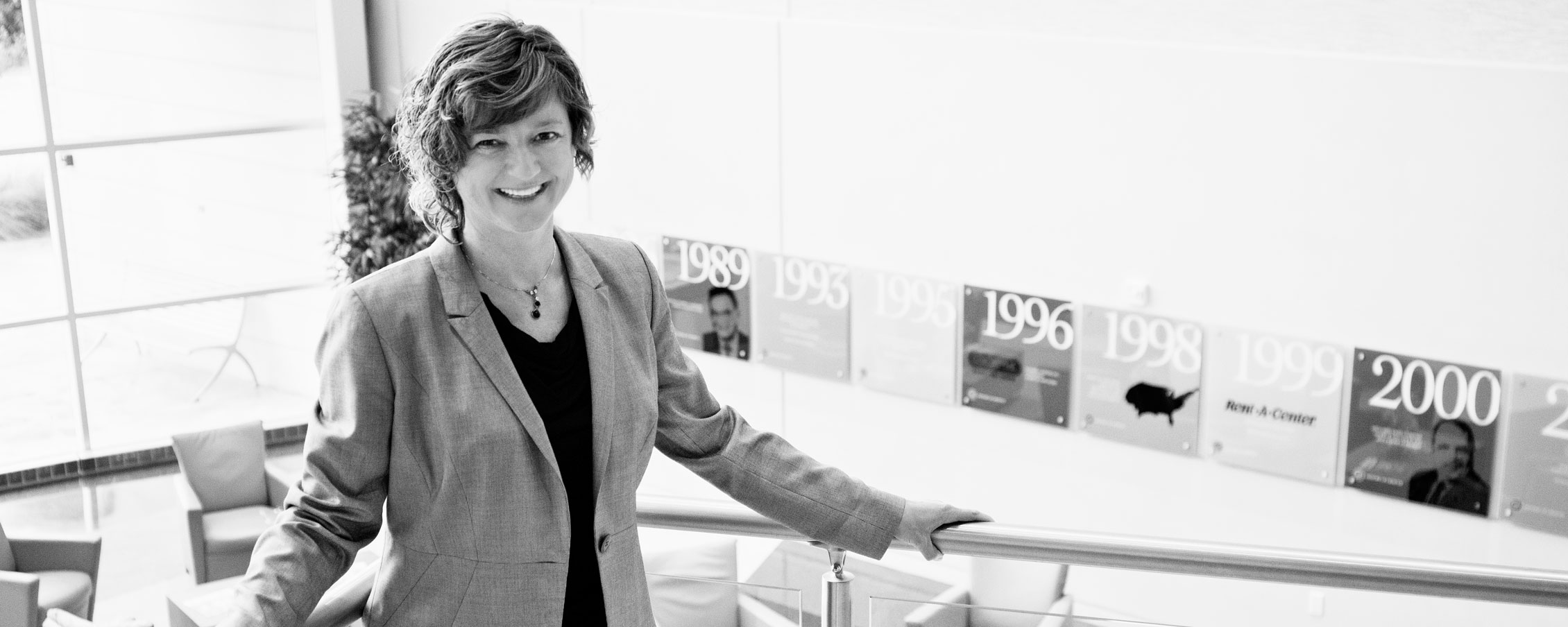Ten years ago, Rent-A-Center (RAC) had just a few people working in information technology. Now, the company boasts a 200-member IT team that’s catapulting the furniture and electronics rent-to-own retailer into a new world of consumer-focused technologies, heeding the call of tech-savvy customers who expect only the best and the fastest technology components in their retail transactions.
A major player in that growth is chief technology officer Christi Liebe, who is molding the company’s vision and developing new technologies through an enterprise-IT management strategy. Liebe must support an enterprise with more than 20,000 employees while responding to a quickly changing environment. She strives to take limited IT resources and allocate them to projects that make the biggest impact on the business. Successful CTOs, she says, need to have good foresight, plan ahead, and balance process with agility.
In many companies, the CTO is a strategy-oriented position with a small staff focused on new technologies. But as RAC’s CTO, Liebe manages a team of 150 people responsible for keeping the company’s computer systems running while also looking forward. She’s in charge of data center operations, infrastructure architecture, DevOps, database administration, and telecommunications connections to approximately 3,000 stores and 1,500 partner store locations. “If something’s down, it’s [the responsibility of] me and my team,” Liebe says.
According to Liebe, the CTO role opens more doors than director-level IT positions. Daily, she receives at least thirty emails or voicemails from people who want to sell her things, get her to a conference, or invite her to speak to groups. Liebe is involved in promoting the business in the press and among peers and works to attract women to technology jobs—a personal passion of hers. The job also requires that she sometimes focus outside the IT department within the business.
“The expectation is you really understand where the business wants to go and help them get there rather than just take orders,” she says. “Yesterday’s functionally split organization structures don’t align to the new world as a service model. In the new world, customer experience provided via service delivery is all that matters to effective IT service delivery.”
As a retailer, RAC’s IT department is heavily constrained on cost compared to tech companies with wider margins, Liebe says. The expectation of IT systems is lower for retailers. But the consumerization of IT is quickly changing that picture.
“As people have experiences on their smartphones at home with huge bandwidth, they want to see that same experience at the office,” she says. “That really drives some fairly high customer expectations.”
To meet those expectations, RAC has grown from relying on low-level technology to installing traffic counters, VoIP phone systems, Wi-Fi, and media walls in its stores. In 2014, it rolled out a new iPad application at its Acceptance Now kiosks, which are essentially RAC stores within a different retailer location. RAC is partnering with more than 250 different furniture, appliance, and electronics retailers throughout the United States and Puerto Rico to offer this service. For example, customers who visit an Ashley Furniture and are turned down for traditional finance options can stop by the Acceptance Now desk located within the Ashley location, type their information into the iPad app, and get approval to lease the furniture through RAC’s Acceptance Now program, under which RAC purchases the item from the retailer and leases it to the customer.
The iPads have cut application time from about sixty minutes to twenty minutes and lifted revenue by close to 40 percent in what has become RAC’s fastest-growing line of business. To start, kiosks were staffed with company associates, but Acceptance Now is deploying a version of its iPad technology to unmanned locations as well.
RAC also is deploying a custom point-of-sale system that was in the works for six years. Liebe provides all of the environments for the developers, quality assurance, and testers. She manages the end-point team and provides support once the software is installed.
The custom POS and iPad projects mark significant progress from where the company was even in the early 2000s, when it operated independent IT solutions at each of its stores. RAC has been around for about thirty years but is fairly new to the idea of enterprise IT, Liebe says.
In 2014 she supported the establishment of an enterprise project management organization that puts together business cases, prioritization processes, and review committees to remain focused on key drivers of revenue and profit margin. “Before there was limited IT-business alignment,” Liebe says. “So there’s a dramatic change in what that looks like over the past year. I think it’s been awakening for all of our coworkers.”

